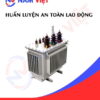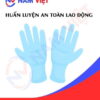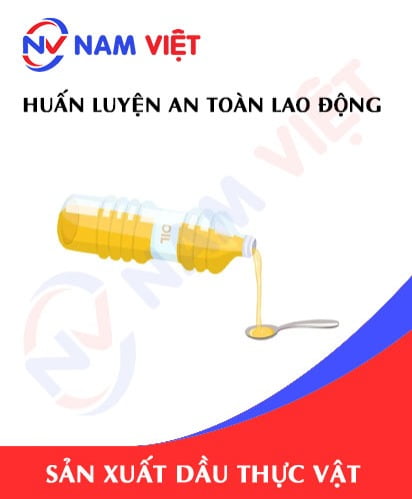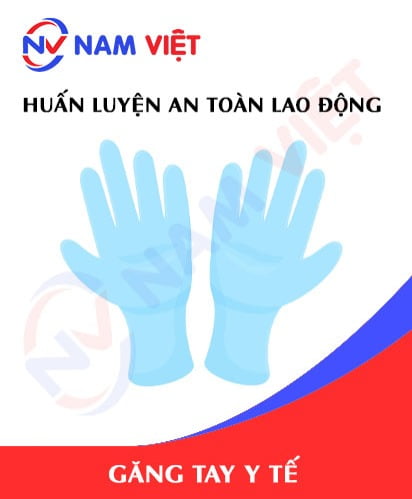Occupational Safety Training for Paper Cup Manufacturing
99,000 ₫
Note: The price above is calculated per person and may vary depending on the number of trainees participating in the course and market fluctuations. For more accurate pricing support, please refer to the quotation list or contact our consultants directly.
Occupational safety is an important issue in paper cup manufacturing factories and needs to be addressed promptly to ensure the health and safety of workers, as well as to enhance the reputation of businesses. The Occupational Safety Training course is one of the effective solutions to raise awareness about preventing workplace accidents for workers involved in paper cup production.
Table of Contents
Toggle1. Overview of paper cups
a. What are paper cups?
- Paper cups are a type of paper cup widely used for holding beverages and other drinks in cafes, restaurants, events, conferences, and other activities. They are made from recycled and environmentally friendly paper.
- In addition to paper cups, there are also some paper products used for holding food such as: paper bowls, paper dishes, paper food containers, paper trays, etc.

- Paper cups come in various sizes, from 4 oz to 20 oz, suitable for different needs. They can also be printed with images, logos, or promotional information of businesses.
- Paper cups are typically manufactured by rolling paper into a cylindrical shape, then sealing the bottom and packaging them for use. With the development of technology, there are now many automated manufacturing machines to produce paper cups with high quality and higher production efficiency.
- According to the Vietnam Consumer Products Market Report 2020 by Euromonitor Market Research Company, the Vietnamese paper cup market is showing a stable growth trend with an annual growth rate of about 7% in the period 2015-2019. It is expected that by 2024, the paper cup market will continue to grow at a rate of about 8.4% per year.
- Paper cup products are commonly used in cafes, milk tea shops, restaurants, supermarkets, and events. With the development of the tourism industry, the paper cup export market also has a lot of potential for development.
- However, the paper cup manufacturing industry also faces many challenges such as fierce competition from foreign manufacturers, issues with quality and food safety, as well as problems with raw material resources. Therefore, paper cup manufacturing businesses need to develop effective manufacturing and management strategies to meet market demands and increase competitiveness.

b. Types of paper cup manufacturing machines
The types of paper cup manufacturing machines include:
- Paper cutting machine: This machine cuts paper into different sizes and shapes to suit different paper cup manufacturing requirements.
- Paper rolling machine: This machine rolls paper into different rolls for convenience in the paper cup manufacturing process.
- Forming machine: The forming machine helps to shape the paper cups from the cut paper.
- Sealing machine: The sealing machine helps to glue the mouths of the paper cups together and create the complete paper cup shape.
- Printing machine: The printing machine is used to print images or other information on the paper cups.
These machines are often integrated into an automated or semi-automated production line to increase manufacturing efficiency and minimize incidents during the manufacturing process.

c. Typical paper cup manufacturing enterprises
There are many paper cup manufacturing enterprises in Vietnam. Below are some typical paper cup manufacturing enterprises in Vietnam:
- Tan Tien Plastic Packaging Joint Stock Company (TPP): TPP is one of Vietnam’s leading manufacturers in the field of plastic packaging, paper packaging, and paper cups. TPP’s products are exported to many countries around the world.
- Huhtamaki Vietnam Ltd: Huhtamaki Vietnam is a multinational company specializing in the manufacturing of packaging and paper products. The company provides high-quality paper cup products for the Vietnamese and international markets.
- The Viet Nam Paper Corporation (Vinapaco): Vinapaco is one of the leading enterprises in the field of paper manufacturing and trading in Vietnam. The company manufactures a variety of paper cups in terms of size, shape, and design to meet customer needs.
- Minh Duong Paper Production Co., Ltd: Minh Duong Paper Production is a company specializing in the manufacturing of paper products such as toilet paper, tissues, notepads, and paper cups. The company’s products meet high-quality standards and are exported to international markets.
- Thanh Cong Paper Joint Stock Company (TCJ): TCJ is one of Vietnam’s leading companies in the field of paper and packaging manufacturing. The company provides paper cup products with many different sizes and designs to meet customer needs.
d. Specific jobs in a paper cup manufacturing factory
Group 1
- Executive director, deputy executive director, head of department in a paper cup manufacturing factory.
Group 2
- Safety officer: manages safety in the factory, designs safety procedures, supervises and urges employees to comply with safe working procedures.
Group 3
- Raw material preparation: Includes types of paper, glue, printing ink, containers, etc.
- Cup manufacturing: This process includes using a printing machine to print images on paper, then using a paper cutting machine to cut the paper into different sizes depending on customer requirements.
- Lid manufacturing: This process includes using a paper cutting machine to cut the lid from a large paper sheet, then using a lid stamping machine to bend the lid to fit.
- Lid sealing: Includes placing the lid into a sealing machine to seal the lid to the cup.
- Quality control: After manufacturing, the paper cup products will be quality checked before being packaged and stored in the warehouse.
- Packaging and storage: The paper cup products after quality control will be packaged and stored in the warehouse, awaiting shipment.
Group 4
- Office work, service, sales, marketing.
- Manufacturing management, quality management, human resource management, material management, financial and accounting management.
- Research and development of new products, design of product packaging.

2. Overview of the work safety training course for paper cup manufacturing
Within the scope of this article, we focus on issues related to group 3, because group 3 is the group directly participating in the manufacturing process, bearing the highest risk of work safety. See more about other groups here
a. What is group 3 work safety training?
- Work safety training for group 3 is a training session to equip workers with awareness of how to prevent work accidents.
- The work safety training course will help workers recognize and prevent dangers, and limit the risk of work accidents while working.
REGISTER FOR WORK SAFETY TRAINING SERVICES
b. Training duration
Initial safety training duration
- The total training duration is at least 24 hours, including the examination time.
- 8 hours of theoretical study on the system of policies and laws on work safety and hygiene
- 8 hours of theoretical study on basic knowledge of work safety and hygiene
- 4 hours of theoretical study on specialized training content
- 2 hours of practical study on specialized training content
- 2 hours of theoretical examination at the end of the training course
The safety training center will allocate the time into many training sessions depending on the time arrangement for employees. But usually, there will be 6 training sessions, and the course will last for 3 days, on the condition that the manufacturing enterprise can arrange continuous study time.
Periodic safety training duration
- Before the work safety card expires, if an employee wants to renew it, they must undergo a periodic work safety training course, with a periodic safety training duration of at least 50% of the initial safety training duration.
Explanation: The total periodic work safety training duration is at least 12 hours, including the examination time. After completing the periodic training course and passing the examination, the employee will be re-issued or have their work safety card renewed.
c. Content of the training course
| No. | TRAINING CONTENT | TRAINING DURATION (HOURS) | |||
| Total | In which | ||||
| Theory | Practice | Examination | |||
| I | System of policies and laws on work safety and hygiene | 8 | 8 | 0 | 0 |
| 1 | Overview of the system of legal documents on work safety and hygiene. | 6 | 6 | ||
| 2 | System of technical standards and regulations on work safety and hygiene. | 1 | 1 | ||
| 3 | Specific regulations of state management agencies on work safety and hygiene when newly building, expanding or renovating works, facilities for manufacturing, using, preserving, storing and inspecting types of machines, equipment, materials, and substances with strict requirements on work safety and hygiene. | 1 | 1 | ||
| II | Basic knowledge of work safety and hygiene | 8 | 8 | 0 | 0 |
| 1 | Basic knowledge of dangerous and harmful factors at the workplace. | 4 | 4 | ||
| 2 | Methods to improve working conditions. | 1 | 1 | ||
| 3 | Safety culture in manufacturing and business. | 1 | 1 | ||
| 4 | Rights and obligations of employers and employees; policies and regimes on work safety and hygiene for employees; functions and duties of the work safety and hygiene network. | 1 | 1 | ||
| 5 | Work safety and hygiene regulations, signs, work safety and hygiene instructions and use of safety equipment, personal protective equipment; skills and techniques for first aid for work accidents, and prevention of occupational diseases. | 1 | 1 | ||
| III | Specialized training content | 6 | 4 | 2 | 0 |
| General knowledge of types of machines, equipment, and substances that generate dangerous and harmful factors; analysis, assessment, and management of work safety and hygiene risks, safe working procedures with machines, equipment, and substances with strict requirements on work safety and hygiene. | 6 | 4 | 2 | ||
| IV | Work safety training examination at the end of the training course | 2 | 2 | 0 | 0 |
| Total | 24 | 22 | 2 | ||
See more training content of the 6 groups
d. Work safety card
After completing the work safety training course and passing the examination, the employee will be issued a work safety card (in practice, it is often called a group 3 work safety certificate ).
In which, the group 3 safety card will clearly show information such as: full name, date of birth, specific job and working environment. At the same time, it also has the training time, red stamp and signature confirming the completion of the training course.
According to the regulations on issuing safety cards specified in clause 2 article 24 of decree 44/2016/ND-CP, it is divided into 2 cases:
- Case where the employer and the employee have a labor contract with each other, the employer must sign, stamp and seal the safety card for the trained person in group 3 after undergoing the training course from the work safety training unit and passing the examination.
- In the case of freelance, seasonal employees, who do not have a labor contract, the training unit must sign, stamp and seal the safety card for the employee after undergoing the training course from the work safety training unit and passing the examination.

3. Identifying dangers when manufacturing paper cups
Some dangers when manufacturing paper cups may include:
- The machines in a paper cup manufacturing factory often use high voltage, so employees must be trained in safety skills to avoid danger.
- The use of glue, fuel to operate machinery, as well as other fire and explosion agents can be dangerous to employees and the manufacturing factory.
- Some chemicals used in the paper cup manufacturing process can be toxic to the health of employees. Therefore, employees must be fully equipped with protective equipment and instructed on how to use them.
- The paper cup manufacturing process often involves the use of large machines and equipment, and employees must fully comply with work safety procedures to avoid accidents.
- In the paper cup manufacturing process, the use of various types of paper, glue, printing ink, and many other agents can contaminate the final product. Therefore, it is necessary to implement strict hygiene and quality control measures to ensure that paper cup products are safe and of high quality.
4. Work accidents that commonly occur when manufacturing paper cups
Paper cup manufacturing can also encounter some work accidents, including:
- Cutting, puncturing, stabbing accidents: Paper cup manufacturing employees often have to use knives and sharp tools to cut, punch, or puncture paper. If these tools are not used correctly or if appropriate protection is not worn, cutting, puncturing, or stabbing accidents can occur.
- Allergic reactions: During the manufacturing process, machines that cut, punch, and press paper will generate a large amount of waste and dust. If not well controlled, this waste and dust can cause itching, and even body damage to manufacturing employees.
- Chemical accidents: The paper cup manufacturing process can also use some chemicals to make paper or print images on paper cups. If not used correctly or if appropriate protection is not worn, accidents related to chemicals can occur.
- Fire and explosion accidents: Paper cup manufacturing can also involve some combustion processes or the use of high-pressure equipment. If not used correctly or if safety regulations are not complied with, fire and explosion accidents can occur.
- Transportation accidents: After manufacturing, paper cups need to be packaged and transported to different locations. If the transportation process is not safe, accidents and product damage can occur.
5. Safety measures when participating in paper cup manufacturing
Paper cup manufacturing requires safety measures to ensure the health of workers and consumers. The following are some safety measures that need to be followed during the paper cup manufacturing process:
- Workers need to wear personal protective equipment, including helmets, masks, gloves, and coats. They should also maintain personal hygiene by washing their hands frequently during the manufacturing process.
- Workers should use protective equipment such as safety glasses, rubber gloves, and air filters to protect their eyes and lungs from paper particles, dust, and chemicals.
- Dust collection systems and ventilation fans need to be used to minimize dust in the air. In addition, cleaning equipment should be used to reduce dust in the workspace.
- Chemicals need to be stored correctly and used for their intended purpose. Workers need to read and follow the safety instructions for chemical use.
- Paper cup manufacturing machines need to be placed in a safe position and checked regularly to ensure safety during the manufacturing process.
- Employees need to be trained in work safety on safety measures and manufacturing procedures to ensure safety for themselves and those around them.
- Products need to be quality checked to ensure safety for consumers. If a product does not meet the required quality, it must be discarded or repaired to ensure safety.
- Periodically organize work environment monitoring in factories and enterprises, collect and analyze harmful factors for employees, thereby adjusting to reduce the level of harm to prevent occupational diseases for them.
6. Benefits of work safety training for paper cup manufacturing
An Toan Nam Viet provides your enterprise with the following great benefits after completing work safety training courses in accordance with the regulations in Decree 44/2016/ND-CP on work safety and hygiene, for companies, factories, and enterprises.
- Employees can recognize the potential risks of work accidents and take preventive measures to avoid them.
- Your Enterprise can establish risk prevention measures in the manufacturing, operation, and maintenance process.
- Minimize costs when work safety risks occur.
- Uninterrupted manufacturing will help increase labor productivity and product quality.
- Comply with work safety laws, avoiding legal risks.
- Create credibility and professionalism in all aspects, thereby enhancing your enterprise’s brand.
Nam Viet’s training courses are the solution to prevent and combat external factors affecting each individual so that they can avoid dangers that can lead to injury or, more seriously, death.
REGISTER FOR WORK SAFETY TRAINING SERVICES
7. Customer feedback after completing the work safety training course for paper cup manufacturing
An Toan Nam Viet has many years of experience in the mission of accompanying many enterprises in Vietnam in general and in the southern provinces in particular. And that responsibility is something extremely precious to Nam Viet, which is why Nam Viet’s Work Safety Training is always focused on becoming more and more professional. And the motivation for An Toan Nam Viet to grow strong to this day comes from the positive feedback and suggestions from enterprises. Below are the feedback from our partners that we have served.
Bac Nam E&C Construction and Investment Joint Stock Company
“The first time I used the service at An Toan Nam Viet, I was very surprised by the enthusiastic 24/7 support of the consulting team. The class organization was very fast and convenient for our company, thank you very much for Nam Viet’s service!”
Hoa Dat Construction and Trading Joint Stock Company
“Nam Viet’s service has helped us a lot in simplifying work safety and the work of completing safety records to serve the working process. The consulting team is enthusiastic and timely with our questions. 5 stars for Nam Viet”
See more customer interviews after using An Toan Nam Viet’s services
8. An Toan Nam Viet’s Work Safety Training Capacity
An Toan Nam Viet is a reputable and quality work safety training center in Vietnam today. With work safety training sessions taking place continuously at manufacturing workshops, factories, or construction sites across the country (63 provinces and cities in Vietnam).
REGISTER FOR WORK SAFETY TRAINING SERVICES
Work safety training license
- An Toan Nam Viet has been checked and issued a certificate of eligibility for work safety and hygiene training by the Department of Work Safety of the Ministry of Labor – Invalids and Social Affairs. This further solidifies our work safety training capacity.

Documents and lectures
- Before work safety training documents are put into the WST training courses, they have been reviewed and approved to ensure that the lectures are correct in terms of knowledge and effective when applied.
- The teaching method of the lecturers is synchronized according to An Toan Nam Viet’s teaching standards, which is a method that experts in work safety and hygiene training have researched and drawn from the teaching process to bring the highest knowledge acquisition efficiency for trainees.
Facilities
- Controlling the factors in the classroom that affect the training process will increase the teaching performance and the knowledge acquisition efficiency of trainees.
- The facilities supporting our training course always arrange spacious classrooms that meet standards for area, lighting, training equipment, etc.
9. Reputable and quality national safety training center
At An Toan Nam Viet, we always prioritize the professional passion for work safety training. For us, conveying knowledge to workers about how to protect themselves so that they have a safe journey on their path to a livelihood is a contribution to building the country.
To ensure effective training, we carefully and meticulously prepare every little detail, no matter how small. From preparing tools, equipment, teaching devices to curricula, documents, sound, and lighting.
Our work safety training lecturers are experts with many years of experience in the field. They even have research projects to identify dangers in all occupations and how to prevent them.
The lecturers’ lectures are drawn from practice and conveyed in a vivid and easy-to-visualize way to workers. These factors help workers feel comfortable during their study time and absorb our teaching knowledge well. Of course, the knowledge conveyed always closely follows decree 44/2016/ND-CP.
From there, they grasp many measures to prevent dangers and how to protect themselves. At the same time, they also apply it in the most appropriate way in their actual work.
Our safety training center is proud to be a unit that provides reputable, professional work safety training services with the following advantages:
- Competitive training costs but training quality is still ensured.
- Flexible training schedule with the manufacturing situation of the Company and enterprise.
- Fast and legally compliant procedures for issuing work safety training certificates.
- Training lecturers are people with many years of experience in the profession.
- The classroom is controlled for factors affecting the training process to increase teaching performance and the knowledge acquisition efficiency of trainees.
- The lectures are compiled to be suitable for work safety at enterprises.
- An Toan Nam Viet works with dedication and professionalism to support customers accurately and quickly.

10. Refer to more occupational safety training materials for paper cup manufacturing
- Occupational safety materials for paper cup manufacturing
- Occupational safety training materials
- Set of occupational safety training test questions
- Occupational safety multiple-choice test for paper cup manufacturing
- Slides of occupational safety training lecture for paper cup manufacturing
1 review for Occupational Safety Training for Paper Cup Manufacturing
No comments yet
















namchinh.haiphong341
Dịch vụ huấn luyện an toàn lao động rất tốt nhé, giảng viên dạy rất sinh động dễ hiểu!